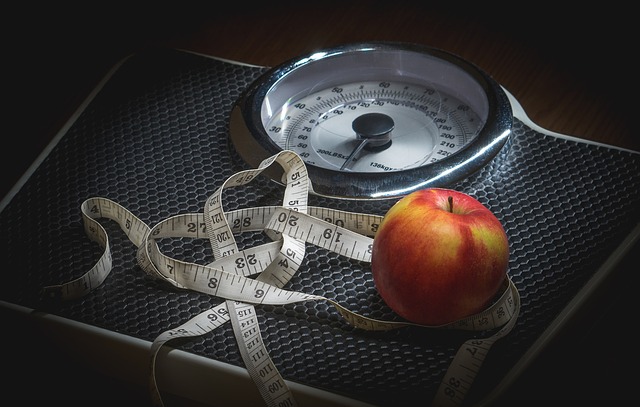Body Fat, BMI and Fitness

Body Fat Percentage and How This Affects Your Fitness Routines
Eliminating body fat altogether is not possible. Without it, you would die – key biological processes would stop, and that would be the end of you.
When you see those body builders competing, or models with 6-pack abs, you are often seeing temporary dips in body fat. Maintaining the trace amount needed for that cut ‘look’ would be difficult if not dangerous.
For the rest of us, the drive to tiny amounts is not the key question. Reducing fat to lose weight, look lean and train more easily (without excess baggage to carry around) is the goal.
This page covers body fat percentages, reducing body fat and the facts and figures you should know.
Here is what you will learn:
- What is the normal range of body fat for men and women.
- How to measure this, from the quick and easy methods to super-accurate ones.
- What happens to fat when you lose it… how exactly does it exit your body?
- What are the key methods of losing body fat, and how to speed this process up.
#1 – Body Fat Percentage: How Much Body Fat is Normal?
 Fat has two key roles. It is how energy is stored and is cushions / protects our internal organs. It is stored in adipose tissue, in the form of molecules call lipids. Without this ready source of energy, normal functioning becomes impossible.
Fat has two key roles. It is how energy is stored and is cushions / protects our internal organs. It is stored in adipose tissue, in the form of molecules call lipids. Without this ready source of energy, normal functioning becomes impossible.
When working out your body fat percentage, the raw measurement is simply; how much of your total body weight is fat, compared to everything else.
Body Fat Percentages for Women and Men
Women have more body fat on average, and a higher minimum requirement for normal function. 10% is considered the minimum viable percentage. ‘Normal’ has a wide spread of 18% to 30%.
Men have a lower survivable minimum, as low as 3% to 5% body fat. This is an extreme. The normal range for men has a spread of 15% to 23%.
Since a lot of excess adipose tissue is stored under the skin, models and competitors in body building contests often lower their body fat to extremes. They will also lower water content. Neither is recommended in everyday life!
Why Lose Body Fat?
Many people drive to lower their body fat as part of their overall weight loss regime. There are lots of great reasons to lose excess fat – though I’d caution against this for its own sake unless you are overweight. Body fat within the normal range does not stop you being fit and healthy. Negative effects occur when you have levels that put you into the overweight or obese category.
Sure, we all want to look our best. My caution here is that being lean and healthy are not necessarily the same thing – whatever those glossy magazines show you!
Losing body fat has secondary effects. Without that extra weight, your efforts are not taken in shifting extra pounds around. You can really focus on your workout and those areas you want to improve on.

#2 – How to Measure Body Fat Percentage?
This depends on how accurate you need the reading to be. There are ways to take a ‘good guess’ with height / weight charts and callipers. At the other extreme there are ways to go super-accurate, though you’ll need to visit a specialised lab for this.
Consistent measurement is the key. For most of us, a couple of approximations (say, biometric scales plus callipers) is more than good enough. As long as you leave some margin for error, and measure the same way / time each week, you’ll see improvements as they happen.
Here are the different ways of measuring your body fat percentage:
- Callipers
- Scales
- Height / Weight
- Water Displacement
- Air Displacement
- X-Ray Specs
Measuring Using Callipers
A simple and surprisingly effective method is to take a pinch of flesh and use callipers to take a measurement. This is then compared to a chart. While this sounds almost too simple, it gives you a reading within a few percent.
You can improve the accuracy of this reading in different ways.
First, take the measurement in the same place at the same time of day each time. Before you eat in the morning is ideal. Second, you can take multiple measurements (for example the Jackson and Pollack method), then use a formula to calculate your average.
What I like about this method is that a pair of callipers is cheap, and the measurement good enough to spot reductions / progress toward your goals. The best-selling callipers over at amazon.co.uk are the Accu-Measure Fit 3000 Callipers.
Scales with BMI Measurements
You might have seen scales with hand held units that measure body fat. This is quick and easy, and one step up the accuracy ladder compared to callipers. Electrical impedance can be measured due to fat and muscle / bone reacting differently to the current.
Why these come in scales is that your overall body weight (and height) can be included. Examples of popular scales which measure it all include the best-selling (and cheap!) Salter Ultra model. You can go one step further and get a set of scales which are integrated with apps, for example these scales from Fitbit.
Once again, consistent weekly measurements win out over a one-off test. Keep the scales in the same place, and measure at the same time each week.

Simple Height / Weight Measurements
I’m sceptical on this one. Taking age, height and weight and coming up with body fat percentages just misses out too much info. One person might be a lifter, with a lot of lean muscle, and be the same height and weight as someone sedentary! If you have no other method and just must get a number, this is one way to go.
Water Displacement Measurements
Now we get on to the professional methods, where specialist equipment and specialist training is needed. Ask your local gym about what equipment they have.
The idea behind water displacement is that you’ll displace different amounts of water based on your height / overall weight depending on the density of your body. Of course, fat, bone and muscle have different density. This method very accurate. In the right lab, you’ll get as close as within 1% to your true body fat score.
Air Displacement Methods
This method needs specialist equipment. You’ll sit inside a special machine and see how much air you displace. If your gym (lab) can afford it, this is a super-accurate way of measuring body fat. Unfortunately, it is not the kind of machine you’d install at home. As a one off, to compare with your scale / calliper readings, this should be on your short-list.
DEXA (x-Rays)
You might have more trouble saying this last one than doing it. Dual energy X-ray absorptiometry involves taking x-rays at different wavelengths. This body scan is considered the gold standard of measuring body fat. You can get packages to go back to specialist labs on multiple occasions. If you are just curious, you can also get this as part of overall fitness level monitoring.
Here the machine (literally) sees all the fatty deposits and can compile a percentage / ratio of these compared to all the other parts.
There are several labs in the UK for this, they are commercial – so I won’t link here. You can always Google it!

Wrapping Up the Body Mass Index Measurements:
You’ll be able to get a good feel of how much body fat you have just by looking. A mix of a pair of callipers (plus a chart) and a basic BMI measuring scales set should be plenty enough for most of us. If you really want that accurate number, then DEXA is the gold standard. Prices here start at £150 per session.
What Happens to Fat When You Lose It?
The Mystery of Disappearing Lipids!
Many fitness professionals were not able to answer the question of how fat exits the body accurately. This is despite them spending their working lives helping people to get rid of it. A medical survey has now cleared this up.
There are a lot of complex chemical reactions listed in this study published in the British Medical Journal. Meerman and Brown demonstrated that the short answer is that fat leaves your body as CO2 (carbon dioxide) and H2O (water).
As with everything in life, things are slightly more complex than this when you dig into the details.
I feel that having this understanding before you embark on a quest to reduce your own body fat can really help you focus on the goal at hand.
Key to the misunderstanding is something called the ‘law of conservation of mass’. The core of this is that mass does not just magically convert into energy (heat for example), the component molecules must go somewhere.
Add to this the concept that adipose fats can magically transform into muscle, and you can see where the misunderstandings came from. The authors do suggest that our focus on energy-in / energy-out is behind that misunderstanding.
Next time you find yourself out of breath after a lifting session, run or class – remind yourself of exactly what is leaving your body via your lungs!
For more detail on this fascinating science, check out this page on the British Medical Journal website.

How to Reduce Your Body Fat: 3 Key Methods
This section covers the reason most of us are interested in body fat in the first place – reducing it.
There are three primary methods:
- Watch What You Eat and Drink
- Exercise: Turn Your Fat into CO2 and H2O
- Cheat Mode / Scams!
#1 Reducing Body Fat with Smarter Eating
Food and drink is such a huge area, that I can only skim the surface on this page. There is a whole section here at Fitness Review which is dedicated to Fitness and Food.
The starting point is a calorie deficit, though what kinds of foods you eat is a close second.
Here is the low-down:
If you are eating more calories than you are burning, your body will store the excess as fat.
Two, the types of food you eat make a huge difference to how much fat you will store.
Watch Your Carbs: Reducing high-GI carbs like wheat and potatoes is a quick win. The extreme version of this is the Ketogenic diet. Here you cut out all carbs – your body will then burn fat instead. This is way too extreme for most of us, though reducing carbs to a bare minimum is a great starting point. You’ll soon adjust, and soon after that you’ll wonder why you ever ate so many of them!
Sugars: I like to call these ugly calories – extra sugar is packed into foods which rarely offer any real nutritional value. Fruit juices, pop, cakes, pastries and that slice of carrot cake… they all need to go.
Fats: This is another key area, if you are consuming unsaturated (processed) fats, your chances of getting fit and healthy are greatly reduced. Natural, saturated fats, especially from oily fish and nuts are the way to go. Combine this with a low carb diet and you’ll see the results fast! You can find more about the different types of fat in my dedicated guide to Fitness and Fats.

What Should You Eat Instead?
Now you know what you should be avoiding, here is what to replace it with. Remember, key is a calorie deficit, this means you’ll need to count each calorie you consume along the way.
Protein should be high on your list. Meat and oily fish, nuts and even substitutes like whey. Add plenty of fresh leafy greens and you are already ahead of 90% of people! Eggs and cheese add flavour to any meal. Jumping immediately to zero carbs is a big ask for most of us. So many people report feeling and working out much better when these are significantly reduced. The Ketogenic diet (zero carbs, which lead your body to actively burn fat) is an option too.
Exercise Routines
Lifters will tell you that lifting is the only real exercise, runners will swear by running (after all, you ever see a runner with a high body-fat percentage?)… and cardio / HIIT fans will tell you that their routines are the only ones which truly work.
And you know what, they are all right!
You are going to need to burn more calories than you consume, though there are many ways to achieve this. More important than the forms of exercise you choose is how regularly and consistently you work out – and for how long.
Nobody loses body fat in a week, you’ll need to keep fighting. If you don’t like the form of exercise you are using as your main weapon, then your chances of success go way down.
Here are some of the forms of exercise you can consider. This list is aimed at those new to fitness or looking for a change up from their occasional workouts. If you are already dedicated, then the answer is to add some extras, or simply to do more. I compiled a list of the best fat burning fitness equipment, which includes comparisons of the calories burned per hour.

Type of Exercise to Consider
HIIT: High Intensity Interval Training leaves your body fat with no chance! Short bursts of intensive cardio, with body weight exercises built in has the dual advantage of toning you up and reducing body fat at the same time. I’d include CrossFit in this category. While this is broader, it includes a lot of the same benefits.
Lifting: Weight training is not only for those looking to bulk up. In fact, adding lifting to your routine is possible at all fitness levels. Not only will you burn fat while you are working out, you’ll continue using energy long after (while your body focuses on muscle repair). You could consider a home gym setup, use body-weight routines – or even join your local gym.
Cardio: This is a broad category, which includes using exercise bikes, steppers and rowing machines. You’ll need to up the intensity to reduce body fat. This form of exercise will help reduce any calorific deficit along the way. Combined with the right diet, this can lead to your body using up fat for energy.
Running / Walking: I have included walking here as not everyone is fit enough to run right away. If you are unfit, then walking is a great starting point. It is unlikely to burn much fat on its own, though once you are a regular walker, you can build on this with other forms of workout. Running is great for staying lean, though you’ll have to go beyond just a couple of miles of jogging to get the full effects!

Cheat-Mode: Is There a Quick Way to Get Body Fat Off?
You’ll see plenty of adverts for easy ways to lose that body fat. These range from magic pills to devices which zap the fat right out of your body.
There are even specialist clinic treatments which stick super-thin needles into you. Of course, the ultimate fat-disposal solution is liposuction. Here the fat is literally sucked out.
These methods may cure the immediate symptoms, though they don’t focus on the problem. That problem is that your lifestyle is leading to excess fat. Only by changing that can you get the real benefits. A healthy body, with all the positives that brings is not as difficult as you may think. Start slow. Change your diet and make exercise a regular part of your life, and that fat will melt away, slowly and surely.
A quick note on EMS Belts. These are sold by companies like Slendertone. The idea is that they zap micro-currents, exercising your abs (or buttocks and chest these days). They are effective, though only as a ‘last mile’. If you have too much fat around the middle, the electric current can’t get through. I recommend you turn to these when you are 85% towards your goal for that last-stretch boost only. Find out more in my Best Abs Belt comparison article.
Here is my personal rule of thumb for all ‘miracle cures’. If they sound too good to be true, then they probably are!
Wrapping Up: Fitness and Body Fat
We all have different shapes, sizes and metabolic speed. What is the perfect body fat percentage for one person, might not work for another. Keep this in mind when you set your own goals. If you are carrying too much fat, this can be detrimental to your health. A little bit here and there, not so much.
You now know the basics of body fat, BMI and how to measure and lower your fat percentage.
Check out some of the detailed articles and guides here at Fitness Review, and find out which form of exercise is right for you. Remember, the best time to start losing fat was last year, though the second-best time is right now!
More Detailed Fitness Guides:


